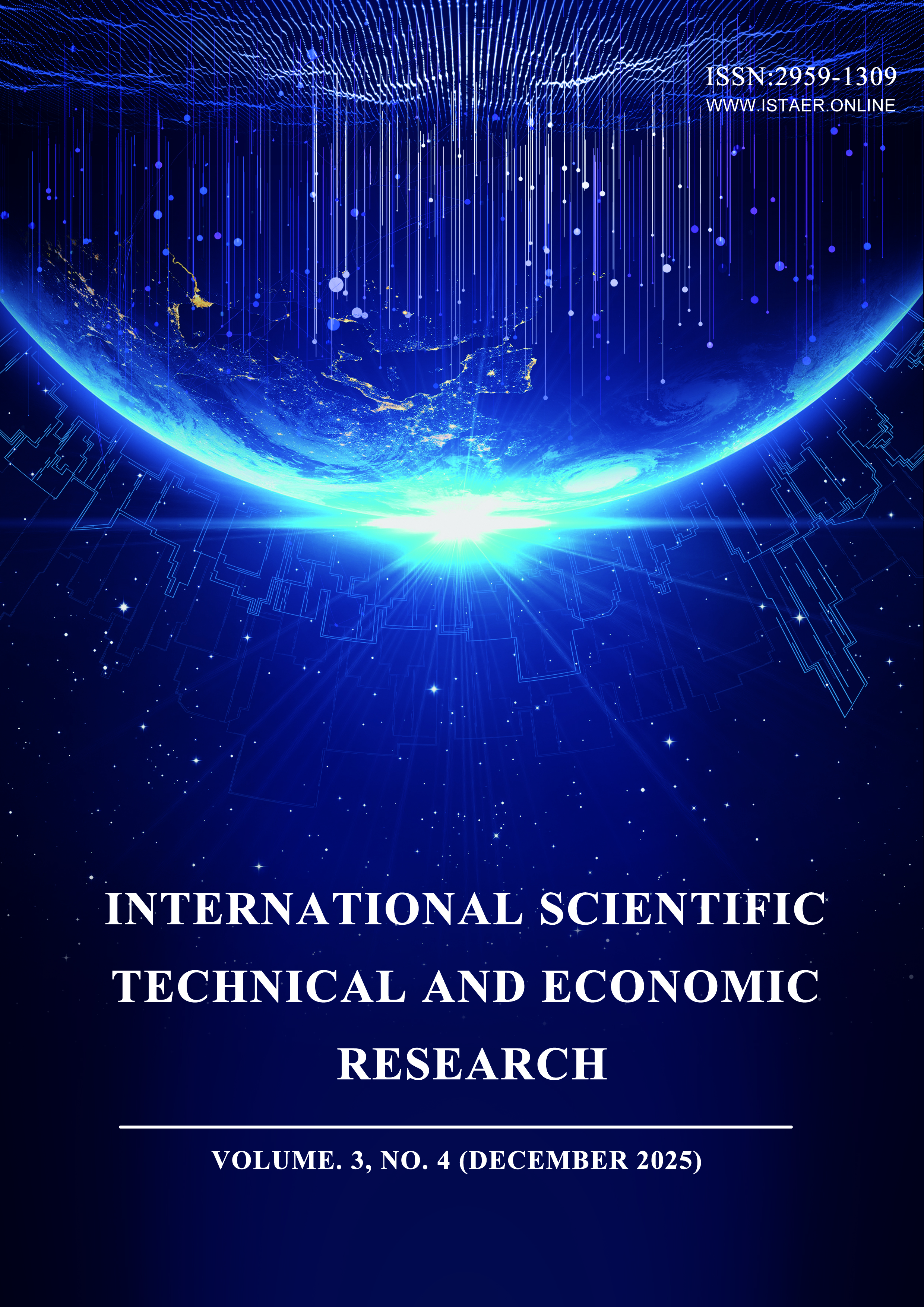Framework for the Application of Digital Twin Technology in Intelligent Production Line Condition Monitoring and Predictive Maintenance
DOI:
https://doi.org/10.71451/ISTAER2572Keywords:
Digital twin; Intelligent production line; Condition monitoring; Predictive maintenance; Framework constructionAbstract
This paper addresses the urgent needs of intelligent manufacturing for highly reliable equipment operation and precise maintenance and delves into the innovative application of digital twin technology in production line condition monitoring and predictive maintenance. By systematically reviewing the core theories of digital twins, multi-source heterogeneous data acquisition and processing technologies, and predictive maintenance methodologies, a five-dimensional integrated framework comprising a physical layer, data layer, model layer, functional layer, and application layer is constructed. This framework innovatively achieves real-time dynamic mapping and bidirectional interaction between physical and virtual spaces, establishes a data-model hybrid-driven mechanism for equipment health status assessment and remaining life prediction, and forms a closed-loop optimization system from condition perception and fault early warning to maintenance decision-making. To verify the effectiveness of the framework, this study conducts a case study using a precision CNC gear machining production line. The results show that the framework can control the latency of critical equipment condition monitoring within 200 milliseconds, improve the accuracy of remaining life prediction by approximately 15% compared to purely data-driven methods, successfully achieve early fault warning, reduce unplanned downtime by 65%, and save maintenance costs by 28%. The research findings provide theoretical guidance and practical examples for achieving precise and forward-looking equipment health management in the context of intelligent manufacturing and have important reference value for promoting the digital transformation of the manufacturing industry.
References
[1] Abdullahi, I., Longo, S., & Samie, M. (2024). Towards a distributed digital twin framework for predictive maintenance in industrial internet of things (IIoT). Sensors, 24(8), 2663. DOI: https://doi.org/10.3390/s24082663 DOI: https://doi.org/10.3390/s24082663
[2] Singh, R. R., Bhatti, G., Kalel, D., Vairavasundaram, I., & Alsaif, F. (2023). Building a digital twin powered intelligent predictive maintenance system for industrial AC machines. Machines, 11(8), 796. DOI: https://doi.org/10.3390/machines11080796 DOI: https://doi.org/10.3390/machines11080796
[3] Keshar, A. (2025). Advancing Industrial IoT and Industry 4.0 through Digital Twin Technologies: A comprehensive framework for intelligent manufacturing, real-time analytics and predictive maintenance. World Journal of Advanced Engineering Technology and Sciences, 14, 228-40. DOI: https://doi.org/10.30574/wjaets.2025.14.1.0019 DOI: https://doi.org/10.30574/wjaets.2025.14.1.0019
[4] Zhao, J., Feng, H., Chen, Q., & De Soto, B. G. (2022). Developing a conceptual framework for the application of digital twin technologies to revamp building operation and maintenance processes. Journal of Building Engineering, 49, 104028. DOI: https://doi.org/10.1016/j.jobe.2022.104028 DOI: https://doi.org/10.1016/j.jobe.2022.104028
[5] Wei, W., Liu, L., Yang, M., Li, J., & Wu, F. (2021, October). Predictive maintenance system for production line equipment based on digital twin and augmented reality. In International Workshop of Advanced Manufacturing and Automation (pp. 479-486). Singapore: Springer Singapore. DOI: https://doi.org/10.1007/978-981-19-0572-8_61 DOI: https://doi.org/10.1007/978-981-19-0572-8_61
[6] Rojas, L., Peña, Á., & Garcia, J. (2025). AI-driven predictive maintenance in mining: a systematic literature review on fault detection, digital twins, and intelligent asset management. Applied Sciences, 15(6), 3337. DOI: https://doi.org/10.3390/app15063337 DOI: https://doi.org/10.3390/app15063337
[7] Falekas, G., & Karlis, A. (2021). Digital twin in electrical machine control and predictive maintenance: State-of-the-art and future prospects. Energies, 14(18), 5933. DOI: https://doi.org/10.3390/en14185933 DOI: https://doi.org/10.3390/en14185933
[8] Feng, Q., Zhang, Y., Sun, B., Guo, X., Fan, D., Ren, Y., ... & Wang, Z. (2023). Multi-level predictive maintenance of smart manufacturing systems driven by digital twin: A matheuristics approach. Journal of Manufacturing Systems, 68, 443-454. DOI: https://doi.org/10.1016/j.jmsy.2023.05.004 DOI: https://doi.org/10.1016/j.jmsy.2023.05.004
[9] Karkaria, V., Chen, J., Luey, C., Siuta, C., Lim, D., Radulescu, R., & Chen, W. (2025). A Digital Twin Framework Utilizing Machine Learning for Robust Predictive Maintenance: Enhancing Tire Health Monitoring. Journal of Computing and Information Science in Engineering, 25(7), 071003. DOI: https://doi.org/10.48550/arXiv.2408.06220 DOI: https://doi.org/10.1115/1.4067270
[10] Mahmoodian, M., Shahrivar, F., Setunge, S., & Mazaheri, S. (2022). Development of digital twin for intelligent maintenance of civil infrastructure. Sustainability, 14(14), 8664. DOI: https://doi.org/10.3390/su14148664 DOI: https://doi.org/10.3390/su14148664
[11] Yakhni, M. F., Hosni, H., Cauet, S., Sakout, A., Etien, E., Rambault, L., ... & El-Gohary, M. (2022). Design of a digital twin for an industrial vacuum process: a predictive maintenance approach. Machines, 10(8), 686. DOI: https://doi.org/10.3390/machines10080686 DOI: https://doi.org/10.3390/machines10080686
[12] Thiele, C. D., Brötzmann, J., Huyeng, T. J., Rüppel, U., Lorenzen, S. R., Berthold, H., & Schneider, J. (2021). A Digital Twin as a framework for a machine learning based predictive maintenance system. In ECPPM 2021-eWork and eBusiness in Architecture, Engineering and Construction (pp. 313-319). CRC Press. DOI: https://doi.org/10.1201/9781003191476 DOI: https://doi.org/10.1201/9781003191476-43
Downloads
Published
Issue
Section
License
Copyright (c) 2025 International Scientific Technical and Economic Research

This work is licensed under a Creative Commons Attribution-NonCommercial-NoDerivatives 4.0 International License.
This work is licensed under the Creative Commons Attribution International License (CC BY 4.0).




